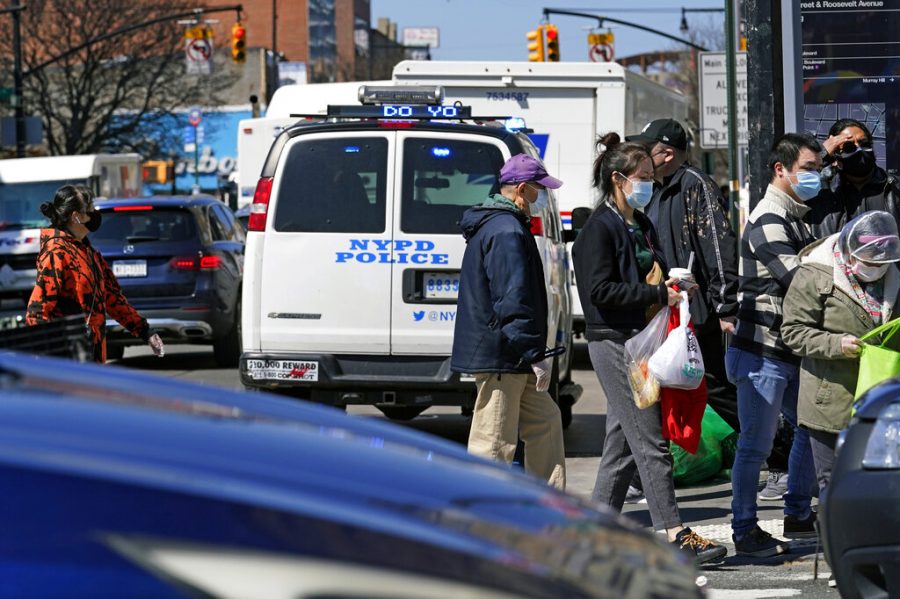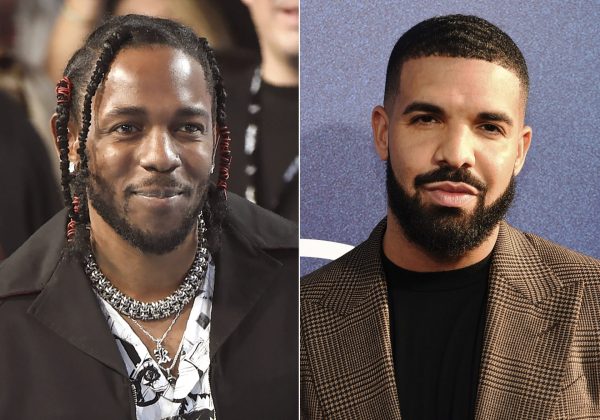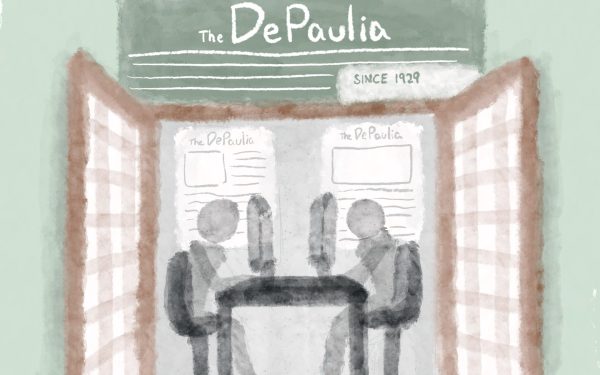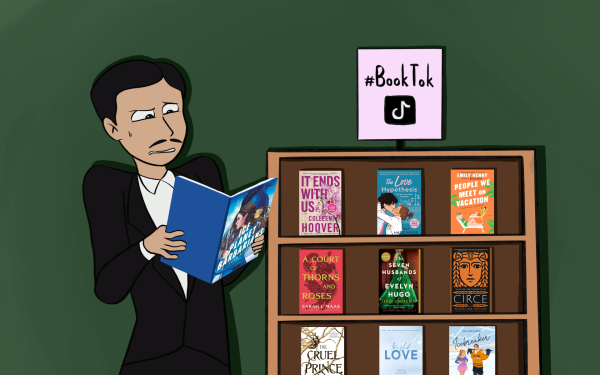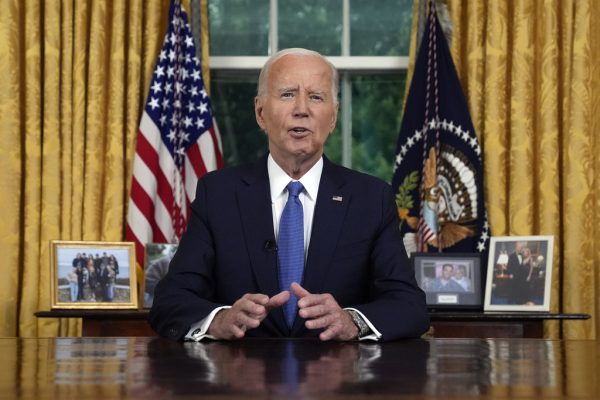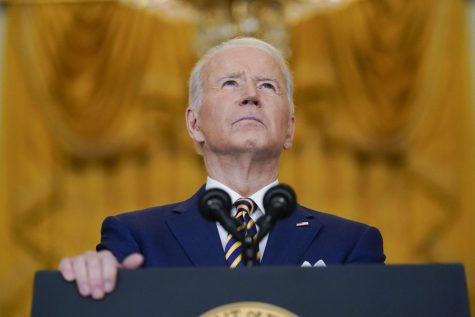OPINION: The rise in mass shootings is a grim sign we are returning to normal
Pedestrians cross a busy intersection of Main Street in Flushing, a largely Asian American neighborhood, Tuesday, March 30, 2021, in the Queens borough of New York. Police have stepped up patrols in similar neighborhoods across the city in the wake of Monday’s vicious attack on an Asian American woman during which no bystanders intervened to help. There has also been a rash of anti-Asian violence across the U.S., recently, including a deadly mass shooting in the Atlanta area that left multiple people dead, most of them of Asian descent. (AP Photo/Kathy Willens)
Since the start of the pandemic, many Americans have been eagerly awaiting a return to normal life, looking forward to nights out with friends, concerts, or trips to the grocery store without putting themselves or people they love at risk. Now, as vaccinations increase, states start to re-open and people start gathering together, this return to normal seems tantalizingly close.
However, mass shootings triggered by these gatherings have been a rude awakening that this reality may not exist: A return to normal life may mean trading one plague for another.
Two recent large-scale shootings were somber reminders of the realities of gun violence and mass shootings in the U.S.: On March 17, a white gunman shot and killed eight people at three different massage parlors in Atlanta. A week later, in Boulder, Colorado, another gunman shot and killed 10 people in a grocery store.
Since the attack in Atlanta, there have been 24 mass shooting attacks (defined by the FBI as where four or more people are shot) in the U.S. In Chicago alone, there have been three mass shooting attacks since March 23.
The shootings took place in seemingly innocuous locations: an office building in Orange, California; a convenience store in Maryland; nightclubs in Cleveland and Mississippi — all places that have been shuttered for the past year.
As we return to classrooms, offices, shopping centers, bars and concerts, more mass shootings will follow. They are a common feature of American life and happen with an almost-numbing frequency.
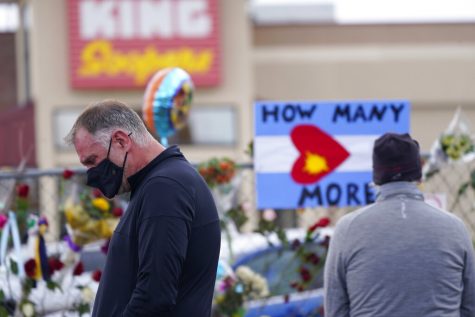
Like many other Americans, DePaul sophomore Bridget Killian grew up hearing about frequent mass shootings and practicing active shooter drills in school.
“Before Covid-19, it feels like I heard about a new shooting every other week,” she said. “It felt like a typical, every week situation, which is horrible. It’s just something that happens in America now.”
Gun culture runs strong in the U.S. Since the country’s inception, Americans have relied on gun ownership to give them a sense of security. In the context of the 1700s, this was fairly logical. A second amendment “right to bear arms” made sense for a country that revolted for its independence and fought against Native peoples.
However, today, “there’s no rationale,” according to DePaul sociology professor Richard Farkas. “Even a hunter doesn’t need an automatic weapon.”
The pandemic may have worsened the factors that go into mass shootings, with an ongoing mental health crisis and racially-motivated anger due to a summer of unrest surrounding police brutality
“The pandemic, combined with the obscene cheerleading Trump did for aggressiveness, confrontation and what he called ‘freedom’ have heightened the problem,” Farkas said.
Mass shootings have trending upwards for years. In 2019, CBS reported that there were more mass shootings than days in the year.
In 2020, large-scale mass shootings in public places were put on pause, but gun violence still persisted, often without much media coverage. More than 19,000 people were fatally shot in 2020, according to the Gun Violence Archive, and there were more than 600 mass shootings incidents in 2020.
Also in the tumultuous past year, gun sales have soared — potentially setting the stage for more violence. The National Shooting Sports Foundation estimates that 8.4 million people bought a firearm for the first time in 2020. According to a Gallup poll in 2020, around 42 percent of American own at least one gun.
“A once-in-a-century pandemic cannot be the only thing that slows mass shootings in this country,” said former President Barack Obama via Twitter on March 23. “We shouldn’t have to choose between one type of tragedy and another.”
A once-in-a-century pandemic cannot be the only thing that slows mass shootings in this country. It’s time for leaders everywhere to listen to the American people when they say enough is enough. pic.twitter.com/7MEJ87Is3E
— Barack Obama (@BarackObama) March 23, 2021
In reality, the pandemic slowed neither mass shootings nor deaths from gun violence. Instead, it revealed deep cracks in an American system that consistently devalues lives and accepts mass casualties as normal.
The real question lies not in whether more mass shootings will come or how we can protect ourselves from these attacks, but in how we can work to change U.S. policies and culture to stop mass shootings from becoming a viable option.
“I feel like we do a lot of work about how to avoid being killed in that situation instead of how to prevent these situations in the first place,” Killian said.
Common sense gun control laws are one solution. They work to end mass shootings by limiting easy access to guns and allowing people to go grocery shopping without the fear being killed. However, it’s not until we re-imagine the American identity and undo a toxic national relationship with guns, democracy and death that we can address the root problem. Until then, mass casualty events will remain our “normal.”


